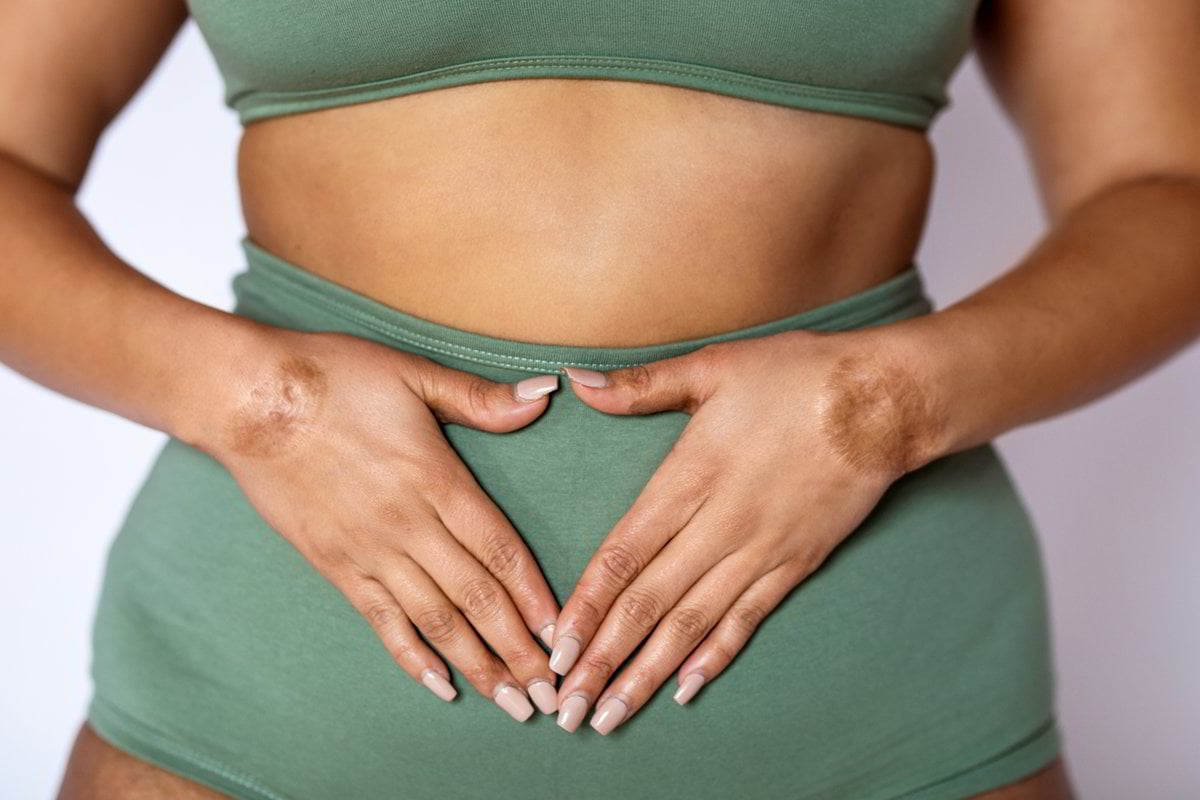
There's just something about 'vaginal discharge' that make people feel ~uncomfortable~. See! We can see you squirming from here. For something that gynecologists say every woman has, we're all like, super weirded out by the stuff.
Why? Well, it's mostly because no one has a clue what constitutes as 'normal' discharge. How much is too much? What colour should it be? Should it smell? What if you get no discharge at all? It's confusing, and the guy taking all the hits is our friend Google, 'cause no one really talks about it. But don't worry - that's what we're here for! *Winks*.
To give you a no-BS explainer, we spoke to a gynecologist to get their advice on the mystery surrounding the stuff in your pants at the end of the day.
Listen to Mamamia's podcast for your face, You Beauty, where host Leigh Campbell reveals why your hair is falling out after pregnancy. Post continues below.
So, yeah - what's the go?
Repeat after us: Every vagina has discharge. And it's totally fine. In fact, it's unusual if you don't have any kind of markings in your undies before your evening shower.
To get into the nitty gritty of where this stuff actually comes from, Associate Professor Gino Pecoraro, a specialist obstetrician/gynaecologist in Brisbane explained, "Vaginal discharge is that usually small volume of sometimes watery and sometimes thicker fluid. The fluid is made up of secretions by both the cervix and the wall of the vagina and these both change during a normal cycle."
So what exactly is it? "The egg-white, runny mucus of the mid-cycle is due to high oestrogen levels, while progesterone in the second half of the cycle makes the mucus thicker and appear less in volume," said Prof. Pecoraro.
"Normal bacteria inhabit the vagina and feed off the sugars that are found in the secretions to help keep the normal vaginal pH, and an acid level which discourages the growth of fungi (like thrush)."




























































































